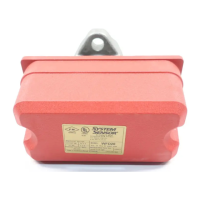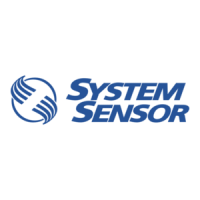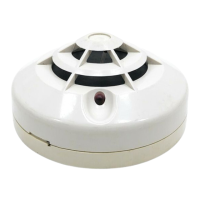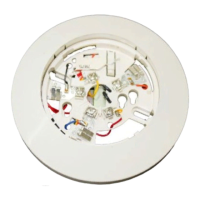D770-01-00 8 I56-459-07
© System Sensor 1996
Three-Year Limited Warranty
System Sensor warrants its enclosed waterflow detector to be free from de-
fects in materials and workmanship under normal use and service for a
period of three years from date of manufacture. System Sensor makes no
other express warranty for this waterflow detector. No agent, representa-
tive, dealer, or employee of the Company has the authority to increase or
alter the obligations or limitations of this Warranty. The Company’s obli-
gation of this Warranty shall be limited to the repair or replacement of any
part of the waterflow detector which is found to be defective in materials
or workmanship under normal use and service during the three year pe-
riod commencing with the date of manufacture. After phoning System
Sensor’s toll free number 800-SENSOR2 (736-7672) for a Return Authori-
zation number, send defective units postage prepaid to: System Sensor,
Repair Department, RA #__________, 3825 Ohio Avenue, St. Charles, IL
60174. Please include a note describing the malfunction and suspected
cause of failure. The Company shall not be obligated to repair or replace
units which are found to be defective because of damage, unreasonable
use, modifications, or alterations occurring after the date of manufacture.
In no case shall the Company be liable for any consequential or incidental
damages for breach of this or any other Warranty, expressed or implied
whatsoever, even if the loss or damage is caused by the Company’s negli-
gence or fault. Some states do not allow the exclusion or limitation of inci-
dental or consequential damages, so the above limitation or exclusion may
not apply to you. This Warranty gives you specific legal rights, and you
may also have other rights which vary from state to state.
1. Waterflow detectors may not work or operate properly if
sprinkler piping being monitored is plugged with pipe
scale, mud, stones or other foreign material. Sprinkler
systems should be checked regularly for such blocking
material, following the instructions in Chapter 5 of NFPA
Standard 13A.
2. Alarms generated by the activation of waterflow detec-
tors may not be received by a central station if telephone
or other communication lines to the detector are out of
service, disabled, or open.
3. Vane-type waterflow detectors have a normal service life
WARNING
The Limitations of Waterflow Alarm Devices
of 10-15 years. Hard water systems, however, may re-
duce waterflow detector service life to 4 or 5 years.
4. Waterflow detectors are not a substitute for insurance.
Building owners should always insure property and lives
being protected by sprinkler systems.
5. If valves controlling the water supply to a sprinkler sys-
tem are closed, vane-type waterflow detectors will not
work. All valves controlling a sprinkler water supply
should be sealed or locked in the normally open posi-
tion. The normally open position should be monitored
by a sprinkler supervisory switch.
Technical Manuals Online! - http://www.tech-man.com

